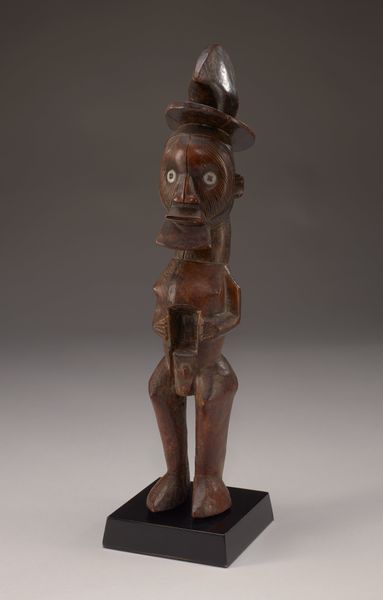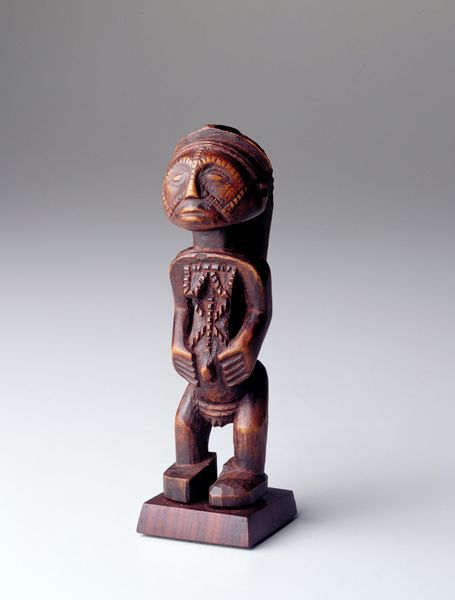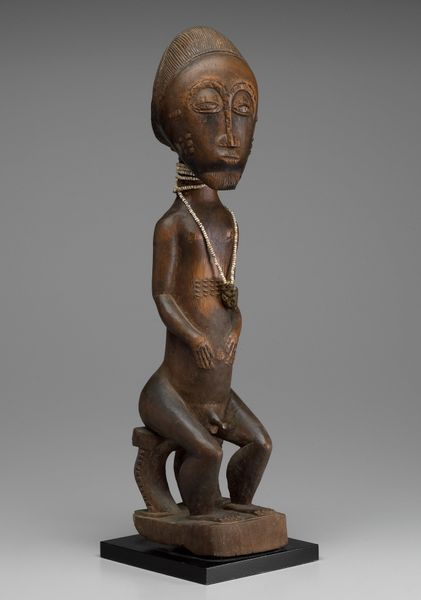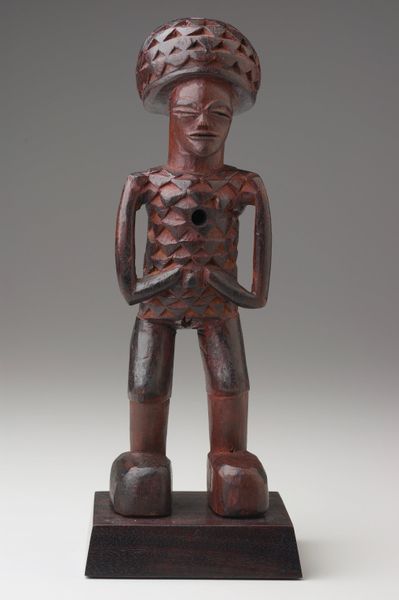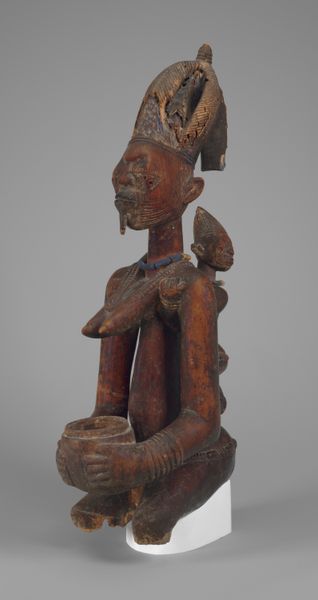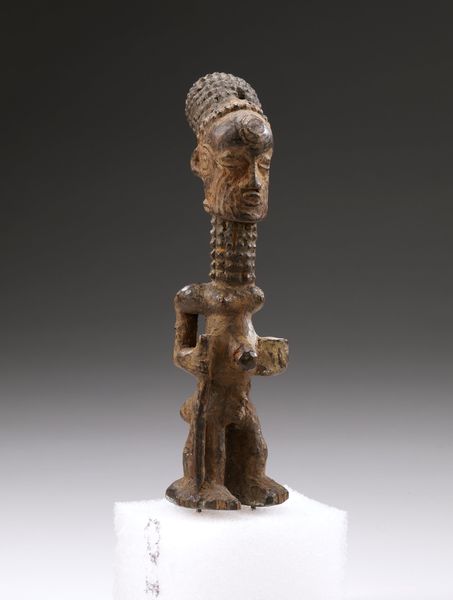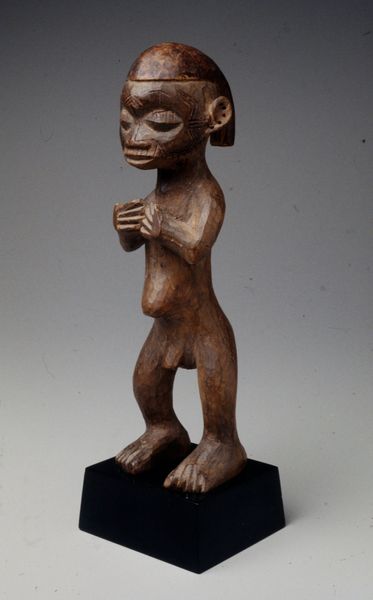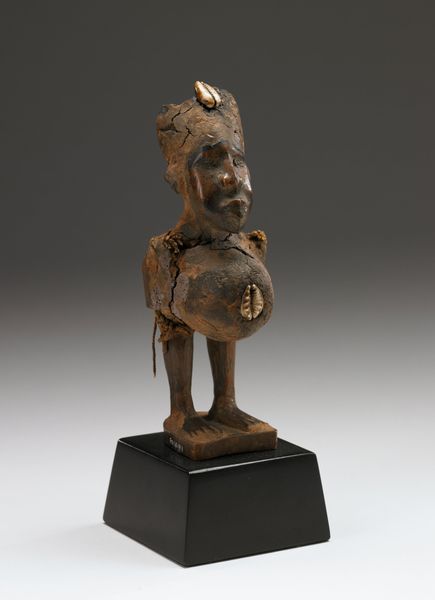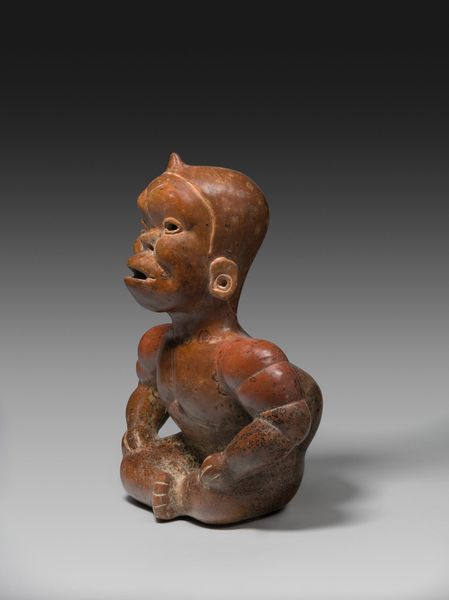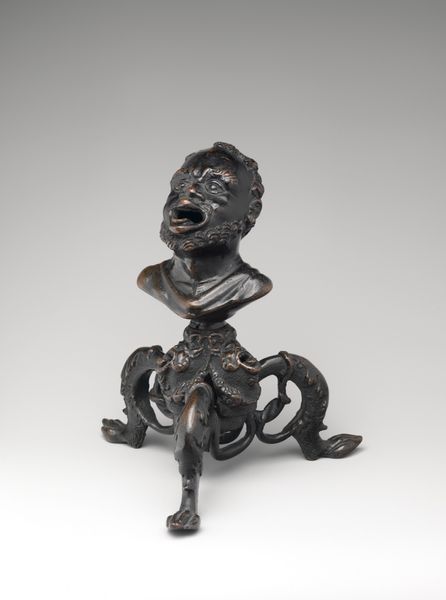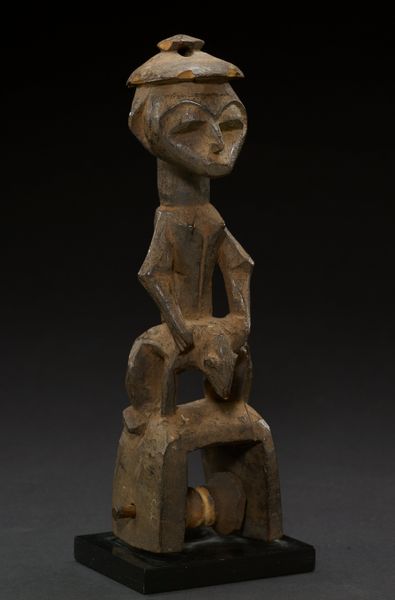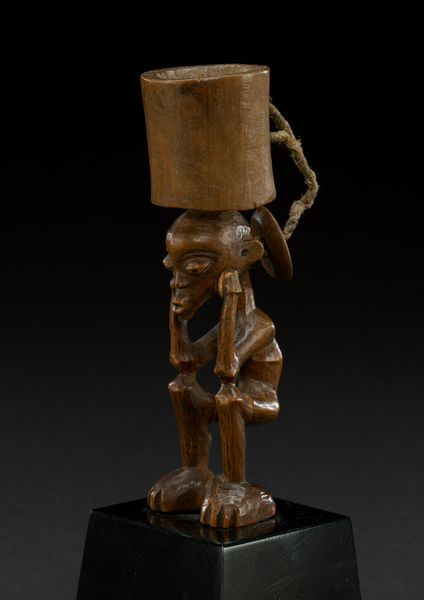
Mother-and-Child Figure (Bwanga bwa Chibola) c. mid to late 19th century
0:00
0:00
carving, sculpture, wood
#
portrait
#
african-art
#
carving
#
mother
#
figuration
#
child
#
sculpture
#
wood
#
yoruba-art
Dimensions: 28.9 × 8.6 × 8.2 cm (11 3/8 × 3 3/8 × 3 1/4 in.)
Copyright: Public Domain
Curator: Looking at this sculpture, I feel a profound sense of serenity. There’s a quiet strength in her gaze. Editor: It’s powerful, isn't it? This is a Mother-and-Child Figure, known as a Bwanga bwa Chibola. It was carved from wood, likely in the mid- to late-19th century, by the Luluwa people of the Democratic Republic of Congo. You can currently find it at the Art Institute of Chicago. Curator: "Bwanga bwa Chibola"—the name itself seems to carry an ancient echo. And that repetition of forms – the cylindrical neck, echoed in the child's form – it feels deliberate. Do you sense an invocation here? Editor: Absolutely. The sculpture likely functioned within rituals concerning fertility, motherhood, and the well-being of children. The emphasis on her features, and particularly that intricate headdress, might denote her status or role within the community. It speaks to the importance placed on the maternal figure in Luluwa society. The idealized, elongated neck and forehead signify beauty and prestige. Curator: It's interesting how these aesthetic markers reflect broader cultural values. It serves to both document the values and instill them upon the viewer. Editor: Precisely! Furthermore, looking at this piece from a postcolonial perspective, one can see the complexities of cultural exchange and appropriation inherent in the collecting and display of African art within Western institutions. Curator: Yes, questions of agency and representation immediately surface. Are we preserving and celebrating, or are we engaging in a continued act of cultural dominance by stripping it from its cultural point of reference? It raises questions regarding ethics and stewardship. Editor: Right, and beyond that, how does the object’s display impact understandings of gender and the black body? Who is she for now? Has it been transformed into another aesthetic object that still embodies colonial hierarchies of power? Curator: It serves as a constant and necessary exercise in introspection as we interpret the past with the knowledge of the present. Thinking about all these different implications enriches the whole meaning of this artwork, doesn't it? Editor: Absolutely, it pushes us to see art as more than just a static object, but as a dynamic reflection of shifting social, historical and cultural forces. It really inspires more research on that particular civilization to contextualize everything about the object, its purpose, etc. Curator: A single work opens up whole worlds.
Comments
No comments
Be the first to comment and join the conversation on the ultimate creative platform.
